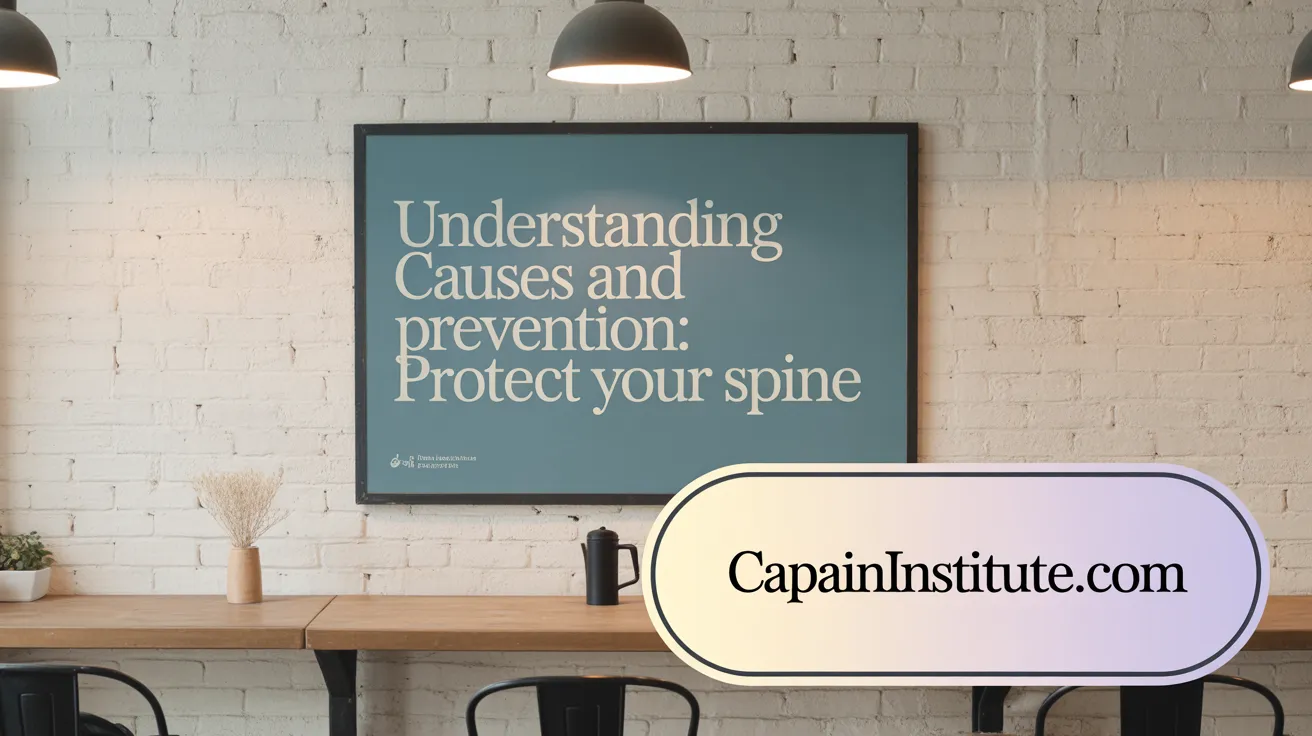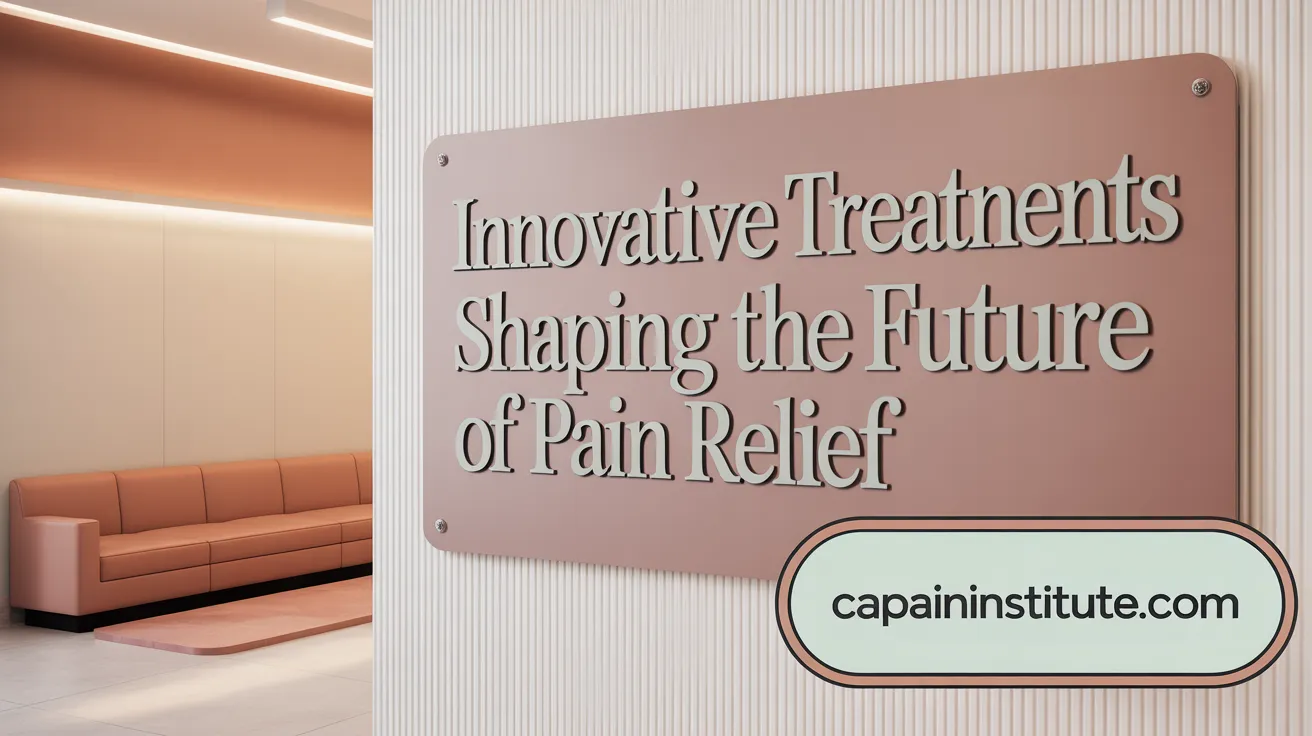Understanding Neck and Back Pain in the Modern Age
Neck and back pain remain pervasive issues affecting millions worldwide, often stemming from a variety of causes including poor posture, injuries, and degenerative conditions. With advancements in medical science and clinical practice, non-surgical treatments have taken center stage, offering effective pain relief while minimizing risks and downtime associated with surgery. This article explores modern approaches to neck and back pain treatment, emphasizing evidence-based strategies, rehabilitation, innovative therapies, and lifestyle interventions that promote healing and long-term wellness.
<!-- VIDEO:eyJsaW5rIjoiaHR0cHM6Ly93d3cueW91dHViZS5jb20vd2F0Y2g/dj14SjZPbTY5NVhEYyIsImltYWdlVXJsIjoiZGF0YTppbWFnZS9qcGVnO2Jhc2U2NCwvOWovNEFBUVNrWkpSZ0FCQVFBQUFRQUJBQUQvMndDRUFBa0dCd2dIQmdrSUJ3Z0tDZ2tMRFJZUERRd01EUnNVRlJBV0lCMGlJaUFkSHg4a0tEUXNKQ1l4Sng4ZkxUMHRNVFUzT2pvNkl5cy9SRDg0UXpRNU9qY0JDZ29LRFF3TkdnOFBHamNsSHlVM056YzNOemMzTnpjM056YzNOemMzTnpjM056YzNOemMzTnpjM056YzNOemMzTnpjM056YzNOemMzTnpjM056YzNOLy9BQUJFSUFGTUFsQU1CSWdBQ0VRRURFUUgveEFBYkFBQUJCUUVCQUFBQUFBQUFBQUFBQUFBR0FBRUVCUWNDQS8vRUFFQVFBQUVEQXdJREF3a0ZCd01GQVFBQUFBRUNBeEVBQkFVU0lRWXhRUk1pVVFjVVZHRnhnWkdUMHhVWFFsTEJJekl6WW5LaDBWT3g0WE9Da3NMd0pQL0VBQmdCQUFNQkFRQUFBQUFBQUFBQUFBQUFBQUFCQWdNRS84UUFJQkVBQWdJQ0F3QURBUUFBQUFBQUFBQUFBQUVDRVFNaEVqRlJFMEZoSXYvYUFBd0RBUUFDRVFNUkFEOEFsWHZrZzRIc2J0cTF1TXJtRXVPZGUzWmhHMDk3OW50UFNwQ2ZJdndVcDFiWDJ2bGt1SS9lU3E0YVNlWkhWdmZrZmhXbTNtSHg5N2RzM1Z3eWhUclhzaFg5WGpIU3UzTVpZdWtsYlFNbFJQZVA0aUNldldLYS9TZG1YbnlMY0ZoU1VuTFphVkdCL3dEb2FpWW5uMmZoWG9ueUk4R3FqVGxzb3FkaEYwenZ2SCtuV2txd21PSzlmbThHUWRscUFrY3RwamF2TjZ5eGVQYlZkclJvU3pEaFYyaWlBVWlBWW53MnAveVBabnkvSVZ3bzJKTjltWjZEdDJ2cDE1anlIY0xlbDVqMzNEZjA2SjhWeDVqY3JkYUJiWDF1aFN0S0huMmdFRXpIUW1QZlJZRVZLYUJxU011SGtONFc5THkvejIvcDEwUElad3I2WG1QbnQvVHJVUW11Z0JURFpsdjNGOEsrbDVqNTdmMDZmN2l1RmZUTXg4OXY2ZGFrQlQwaG1XL2NSd3I2Wm1QbnQvVHBmY1J3cDZabVBudC9UclU2VkFHVnI4aFhDU0FTcSt5NEFFNzNEWDA2OFd2SXB3WTgrcGhySlpWYmlVaFJTbTRhTUE4ai9EcnJ5Z2NSWngvTDNGcHc1Y3BZYng2U0gzZWVwd2paS1o2Z0hmbU54V1pMNGp6MWhrVmR2a3JqdHRXcFNsS09sWFA4UHFra2RCVTh2QjFTdG1wL2NQd3A2Ym1QbnQvVHB2dUg0VTlOekh6Mi9wMFhjQzV0L040dEwxMGtwZEEzNVFmV0JSTlRUdFdEVk9qSy91SDRVOU56SHoyL3AwdnVINFU5TnpIejIvcDFxYzBwcGlNcys0ZmhUMDNNZlBiK25TclU1cFVyQWhKU0s3Q1JVYnpwdFBOWUZMejFuODRwV0ZJbGdDb0dmdGxYZUZ2V0d3QzR0bFdpUlBlQWtiZTBDdWprYlZQN3pvRlJyN0wyN05tKzgwcnRGdE5xVWxJQjNVQnNLSDBOVlpuSEJ0MWJzNUM2c3I1NXJ6RzlZTG1wU0NsSUtRSkFVZVEzbWEwdkdaekdaRnBrVzkreTR1QnRxMGxSOWg2R3NkeTFpdkpYYlRqcjBKVXBTbG9TbUFUUHE1YytWZE9xODFiVG9JU0VjcFBoWE5HZkZuWkxIek4yQnFxdmVKOEhZUE9NM21WdEdYV3Y0aVZPaVVlM3dxaDRYNHNUZW84MmNDQTZrQ0ZiZ0srUEtoM2luR0RQTVgxcjI3ZHVzdkZiUzBvMlNyVVRKOFo5VmEvTHF6RDRYeWFOVVlmYXVHVVBNT0pjYVdBcEMwbVFvSHFLOUpyQWZKL3h0ZDRkMjR4SlUvZDI3THFna05ObFVDU0RBNWdjejRlTmE4emwyM0xkRHk3bFdsUUJHbENpVFBxQU5hSjJadFVySW1YOG9HRHhkOHF6VTQ0K3Rvdyt0aEJXbGcrQ2lPUm9qczcyM3ZyVnU1dFhVcmFjRXBVRHNhejNJV0F5clZ4aTFKYVlzcnNrYWt0TFF2bk9xRlIxNmtmNHF3NFgwNE8zY3h6aWJoN3MxcTdGSUFjV3RBanZHSUFFL3BXQ3l2blJ2TENsRGtEM0ZsaTFhWjY3U0NYRTNEdmJPNjFFNnlvYmVvQWN2ZFFMeFpqa202YXUyRXQ2VHRvS2hLMWNnQjRucFdsY2FMeHVSdDBPc29mYnZaQTFHQktmQWdFaXFEQ1g5dmlydExsemowM3EwcUNrRXEwbHZwSTI5Wi90VU50Wk5HcWlwWXRvMExnakYvWTJKYlE0NjZva1FFcS9DbnB0N0FLSXZPRTlFcU5EYlBFN1YwaHRkcFpyVnIvQzY4bHRRK1BPcGlyeklwUVZIRjZSL3dCWUtQd0ZkRUtxa2NtUzd0bHY1eDRJUHhyazNDK2lJOTlVaThqbENVOWxZdEdmekZ3Zit2NjB5c2xsUWtwUmFNRnpvSWRBSHY3TTFaRmwxMjd2Z1BoU29aVmtlSmllN2FXQTk3djZvcFVoakpzTVhyMXU0OWdxL01XZFIrTVZOUTNZaElTRzBKQTZhWS9Tb0tiMUJVUUZpUUpJbmw3YTdGeVBBZkdzMWtaZnhvbUphc1R0S1I3SEFQMXFQbW1yTnJEWHpzY3JkZmVDNUkyTmNDNEJTVEkyL2xvYTQ3dmo5bXRXRnB2YzNpOUtVdGp2S1NCSi9Tam02QlkxWU80Ky9idlZ0bHRRVXBJL2FBZmhWSGUvNDl0Vm1ZZEpkZVpBbUNVa3pSWmgrRi9zM2h0MjNPazN6cm5icVVuODBScEh1bjNtaE1ZOTY5VzY2WmpTVks2R1kvelhPNDB6c1VyUkZ3dVV2N1dYcmR3b1V3NEJyMUdISWdnRWRhME5kK3JMRnUrYVlRZ0xFNkNlaGpjbnhvQnRNY29JWWJhUXBiSlVWUE9uYVI0RC93Qy92UlhqSDBvdDBSeUpNU1FlUkkvU3RPS2EvRENjcFJscnM5MGNPWWdYWG5qdVB0bFhCVVZxSVJwbVFRZVhQbWVmNkNqYkNxWnRzT3BZdGsyclRldFlEU29Tb1NUTUNJbnJRTmtyOXh1emM4Mi9qYWU0QjFQUVJYaG1lTEw2dzRWZHg3alNDODZsVnZxVFBjMURmMjh5QjdSVnBwR2UybURkdnhUbGhrSGJ4MjdXNnR4UjdSdDFSVWoyUjBqcEZUY1BrTGpLOFcyTDkwc0ZRVVlTalpLRWhKTUFWUTMrSHU4Wmk3Syt1QXRKdXdwU2tLRzdjSGI0aURWN3dJd2RhOGs3SWhLbTJSNC9tUDZmR3M1MHJrWGo1T29oTHhGYlB1bEM3WkFXcE94VHFpUjRpYWgyZVBVRkZ5NktRVHpRTnlmYWFzVGRhaHVhak9QalZ6cm01L1IyVTBTb0FBSjVEbFJ2aVg3ZTlzVVBPRDlvTzR2dkhtUFlhQTBxY1d5cFRZMUpRTlMvVW54cTI0VnlDR2x2TnJVQzJ0QVdENndZL1dxd1NjY2xlbWVlS2xDL0F5N0swaU5DZmpUQzNzaHlaYTk0bW9JeUZzZnhwLzJyb1h0dWVTMC9HdSt6aG9sK2EySG96SHl4U3FKNTB4K1pQeHBVN0NnSVJlYU5nSkVVL256ZlZQZVVlcDNtaFQ3VUlJMUtFYzl6TVZhS3lkZ1VxN1FCQjBKVWtOeU5TdXpKS1pneDNnQjc2em8wc3R4a1VKU1M0c05uVkc2aDdoVlRlMmp6M0VGcGtRcENtMmt3ZFNpQ25ueUhYblRHL3dBWWhEaFJjZWNFTm1OU2h1U2hVRUNOanEwaVBYTmMvYU9OWXNWT0lkU1hsTWpRbFIyQ2pwbnB0RXErRTBVTGtYYUw0TmpTbFNkaVpsWCtheXJpcmlXNFZucnREQ1VLYVE0VTZUTzVBQUoyOVlQSUNqMXk5eHFrbFM3bnMrNXVFQXEvQUkyam5xa1JQaDR5QURpd1laeDI1Y3QzMjAzeWJvbUFxZGJaUzEzcENkL3hiZXRSNlJWUmltOWt5bTEweWd1Yy9sSFdpMzUyNDIxSDdqYXlCSHhtai9BQk9OeGxsYUxVcGJuWkJ4WkprYWxrcWdleWFvV2NKd3ZkWFNiZHZKT0hXcUN0dGVyUUFVekhkM2thdC83ZEtKOHJkNHRDZzhwMURhVU5JYlNVcTdzNk45OU84S0g5elZTUzZSS2I3WklOejd4MDYwVDJGNnlxMGFXbEtVa3BHcUJFa2JiMERKek9EVGNOTFplRHJJdUd3NFhWd0MwVmJyalR2dHpUc1I3OXJ5d2N0R3JSN1hjUTJoYVVvZGsvaVFzamFKbVVqYnBKOXRRNFYyVXAyUnVON2szOTFZWS9jSVhxV3BmaDAvelhoZDVXM3hWcWtwQVMyME5LR3h6SmpaSTlmS1QwSHJJcmppRzZ3WnZtbTdxN1A3a0FoY0VTVzkrWExkei9BTWZYUXR4TzZ1K1p0Y2trSVNrc3BTcHNFOTBuZmwwNTZmOEF0QjYxbkxIYjMwYUtkTFhZWTR6S2VmWTlxNFBkV1JDMGpvb2M2OUZYRW1TYURjTmxHYlZscXpXc2gxNEZ4TzIzVVI3ZHF0VGVqeE5jMHNWTTZZWkxRWFlySnRvYzdKWUdseEpTbytJcXZZdlhNWmtpMkZpRXIwcUI1RVVNWEdXYXQrK3QxS0k2azFMdTc5TjdaVzE2M3E1YVZFaUpqa1lxbEIxZmdPYXV2VFJQUFVnR1NJK0ZlTHVRWEEwSUpVZjVnQUtFYmZJbDRCUVNkZW5kUU1BbXBUVi9LUVZiR1lPMFYwclp5dlFSREloSUFjZlRxL3FIL0ZLaHZ6MVFudkxNNzdLQXBVNkZhQTVkNnZSK3pJU1FKQW5yNFZmM0NzU2JsYlRGMTJZUThHd1M2Q2xVaFN0UUpKTWQxSW5sS2h5b0M4Ny9BSnE4emNFR1FVa25xYTBvaXpRR3JiRXFkQ0RrV3UrSVVwY0FObVJNd2R3QW9lMGhYaFhEMW5pZFNYRTNZYlVwc2FtMHVvVm9VRzBreWRYTXFLaElrU0lvRzg4TWJuNFZ6NTNCNmtuclJRckR4TE9QUStwQ3NtRk5BRmFWQmJVN0tJMGJxSGVnQlVuWWd4enFrZHdtTnliN0YwOWtVc0YzVjJ4THFFaElUSTNCTXpBQm5sRzNPaDlkMFNrNllCTmNlY0FpRks2VUxRZGhKaUxMR1dOOVpvVGVvdUV1S1VsODYwZ0E5aWxZSUlPdzFLS2QrcWF1bnNWaWJrQzNkeUFkTHV5RkJhQm9VVEE1R1NyY2JSQm1zMnRTcHBaQ1NJOGFuK2VMU2tGS2pxSEpTVEJIckJwL1lMb3NMaXl0ck8rWVpadUV1c2lDdVZKSlFzUVNreDdSdnkzam1EVm41MS9OQjZnZGFEUThwVHNPS09xWkNwaysrcHFMeFNWQUZjK3VpV3dqb2tacDlUdCsyb3laUUJ2N2F0cmx3TzJKdHl1RzlBVDhLR2J0eFMzRUxCS2lOdlpVbHk1S2t4cTJwVU5NaDNqaXlXbEdaUktVbndneit0TWNoZUtUcE55NUg5VmRYaXd0b1JFZ3p0VUthYVdoTjdQUVNwZThrazgrdEZ3Y1NpMFNnRXdsdm9yYWhleVNsSysxWEJqOTJwNnIweENqSW9hc0U2THUweWNNNlVMbmNURUhhcEF2bGZ2QlpqL2VoTmh6UkpTb0dlaHIxTnhKQktsQWpxa3hVcUpUbFlUZmFRR3luRWcvMTBxR08ySCtxcjNtbFRvVmxWTkthYWxWRWowcHBxVkFEMHBQalRVcUFIcFUxS2dCNmFsU29BZW1wVXFBSHBxVktnQjZWTlNvQWVsU3BVQUtUNDBxVktnRC85az0iLCJ0aXRsZSI6IkFkdmFuY2VkIHRlY2huaXF1ZXMgZm9yIGFsbGV2aWF0aW5nIGJhY2sgYW5kIG5lY2sgcGFpbiAuLi4iLCJzbmlwcGV0IjoiQ29tbWVudHMgwrcgTm9uLVN1cmdpY2FsIFRyZWF0bWVudCBGb3IgTHVtYmFyIFNwaW5hbCBTdGVub3NpcyAoUGFydCAxKSDCtyBGYWNldCBKb2ludHMgaW4gdGhlIEx1bWJhciBTcGluZS4gwrcgQWR2YW5jaW5nIGNhcmRpYWMgY2FyZTogYSBnbGltcHNlIGludG8gLi4uIn0= -->Causes, Diagnosis, and Prevention of Neck and Back Pain

What are the common causes, diagnostic methods, and prevention strategies for neck and back pain in current treatment paradigms?
Many individuals experience neck and back pain due to various factors. Common causes include muscle strains from poor posture or overuse, degenerative disc disease, herniated discs, arthritis, spinal stenosis, nerve compression, injuries like whiplash, and prolonged screen time. Aging-related changes, such as bone spurs and joint inflammation, also contribute, along with lifestyle factors like smoking or being overweight.
Diagnosing these conditions typically involves collecting a detailed patient history and conducting a physical exam to identify pain patterns and potential neurological symptoms such as tingling, numbness, or weakness. Imaging tests, including X-rays and MRI scans, are used selectively when structural issues or soft tissue injuries are suspected. However, many cases are diagnosed clinically without immediate imaging, focusing instead on symptom management.
Prevention plays a vital role in managing neck and back health. Strategies include practicing good ergonomics—such as keeping screens at eye level, using supportive chairs, and avoiding prolonged static postures. Maintaining proper lifting techniques and engaging in regular low-impact exercises help strengthen muscles and improve flexibility, reducing injury risk. Maintaining a healthy weight and avoiding smoking are also associated with better spinal health.
Additionally, managing stress and ensuring adequate sleep are important aspects of prevention. Patients are advised to seek medical attention if they experience severe, persistent, or worsening pain, especially if accompanied by neurological deficits or systemic symptoms. Early intervention and lifestyle adjustments are essential to prevent chronic discomfort and address underlying causes effectively.
| Aspect | Details | Additional Notes |
|---|---|---|
| Causes | Musculoskeletal strain, degenerative changes, injuries, nerve compression, aging | Prolonged screen time, poor posture, smoking, overweight |
| Diagnostic Methods | Patient history, physical exam, X-rays, MRI | Imaging used selectively based on symptoms |
| Prevention Strategies | Ergonomics, exercise, weight management, stress control | Seek medical care if symptoms worsen |
Non-Surgical Treatment Approaches for Neck and Back Pain
What are the modern, non-surgical treatment approaches for neck and back pain?
Contemporary management of neck and back pain emphasizes non-invasive methods that have proven effective in alleviating symptoms and restoring mobility. Physical therapy remains a fundamental approach, involving targeted exercises to strengthen muscles, improve flexibility, and correct posture. Techniques include stretching routines, manual therapy, and specific strengthening exercises designed to reduce tension and prevent future injury.
Interventional pain management offers minimally invasive options like epidural steroid injections, facet joint injections, nerve blocks, and radiofrequency ablation. These procedures aim to diminish inflammation and interrupt pain signals, providing long-lasting relief when conservative therapies fall short.
Complementary therapies also form a vital part of treatment plans. Acupuncture, massage therapy, biofeedback, and low-level laser therapy are used to stimulate natural healing, relax tight muscles, and reduce inflammation.
Beyond therapies, lifestyle modifications are crucial. Ergonomic adjustments—such as proper desk setup and supportive seating—along with activity pacing, weight management, and stress-reduction techniques, contribute significantly to managing pain and preventing exacerbations. Altogether, these approaches form a comprehensive, patient-centered strategy that minimizes reliance on surgical interventions and enhances quality of life.
Evidence-Based Guidelines and Clinical Strategies for Pain Management
 European clinical practice guidelines provide a foundational framework for managing neck and back pain through evidence-based approaches. These guidelines, derived from systematic reviews and expert consensus across multiple countries, emphasize comprehensive assessment and individualized treatment planning.
European clinical practice guidelines provide a foundational framework for managing neck and back pain through evidence-based approaches. These guidelines, derived from systematic reviews and expert consensus across multiple countries, emphasize comprehensive assessment and individualized treatment planning.
To guide diagnosis and tailor treatment, clinicians use validated assessment tools such as the Neck Disability Index and conduct clinical tests including cervical active range of motion, neurological examinations, and neurodynamic testing. These help distinguish serious pathologies from benign conditions, ensuring appropriate care.
In managing neck and back pain, guidelines support a multimodal approach that aligns with the patient’s specific subtype—whether it involves mobility deficits, movement coordination impairments, or radicular symptoms. For example, for mobility deficits, manual therapy combined with active exercises proves beneficial. For nerve-related symptoms, interventions like nerve blocks or guided exercises are preferred.
Stage-specific strategies are recommended for different phases of pain. During acute phases, focus is placed on reassurance, gentle movement, and education. Subacute stages see an increase in active therapies such as stretching and strengthening. Chronic conditions often require multidisciplinary interventions, including psychological support and patient education about self-management.
A critical aspect of these guidelines is the cautious and judicious use of imaging and medications. Routine imaging is discouraged in the absence of red flags to prevent unnecessary procedures and costs. Similarly, opioids and certain pharmacological agents are generally reserved for cases unresponsive to conservative management and with clear indications.
Screening for serious underlying conditions—such as infections, fractures, or malignancies—is essential to avoid misdiagnosis and inappropriate treatment.
In summary, effective management relies on patient-centered, evidence-based strategies that combine clinical assessment, personalized intervention plans, and prudent use of diagnostic and pharmacologic resources. Such an approach enhances outcomes, reduces unnecessary interventions, and promotes long-term recovery.
The Essential Role of Physical Therapy and Rehabilitation

What role do physical therapy and rehabilitation play in modern pain management for neck and back pain?
Physical therapy and rehabilitation are fundamental components of contemporary approaches to managing neck and back pain. They provide tailored, non-invasive strategies that target the root causes of pain while improving overall function and mobility.
Therapists use a variety of techniques, including manual therapy such as massage and joint mobilization, alongside active treatments like stretching and strengthening exercises. Modalities such as ultrasound, electrical nerve stimulation, and heat or cold therapy are also employed to reduce inflammation and muscle tightness.
The goals of physical therapy are to alleviate pain, restore normal movement, and prevent future injury. Strengthening core muscles helps support the spine, while improving flexibility and posture addresses contributing factors. This comprehensive approach not only eases current discomfort but also enhances long-term resilience.
Patient education plays a critical role. Teaching proper ergonomics, posture correction, and self-care techniques empowers individuals to manage their symptoms effectively and avoid recurrence. Additionally, therapists guide patients through exercises they can perform at home, fostering ongoing support and self-management.
When integrated with medical treatments like medications or interventional procedures within a multidisciplinary framework, physical therapy has been shown to significantly improve pain and functional outcomes. It is equally effective for acute injuries and chronic pain conditions, making it a versatile cornerstone of modern pain management.
Non-Invasive Therapies and Movement Strategies for Pain Relief

What non-invasive therapies, including stretching and movement strategies, are effective for pain relief in patients with neck and back pain?
Various non-surgical approaches have been proven effective in alleviating pain and improving mobility for individuals suffering from neck and back issues. One of the most accessible methods includes stretching exercises and yoga, which help increase flexibility, reduce muscle tension, and improve circulation. Specific stretches like the neck tilt, child's pose, cat-cow stretch, hamstring stretch, and thoracic rotation are particularly beneficial for relieving discomfort.
In addition to stretching, physical activity programs that incorporate aerobic conditioning, Pilates, or tai chi can enhance overall spine health. These exercises strengthen core muscles, support proper posture, and decrease mechanical stress on the spine.
Manual therapies, including physical therapy, osteopathic manipulation, and chiropractic adjustments, aim to realign the spine, strengthen supporting muscles, and relieve pain caused by mechanical issues. Techniques such as myofascial release, trigger point therapy, and massage therapy help reduce muscle tightness and promote relaxation.
Complementary treatments such as acupuncture and transcutaneous electrical nerve stimulation (TENS) modulate nerve signals to diminish pain and inflammation. Acupuncture can activate the body’s natural pain-relief mechanisms, while TENS delivers electrical impulses to nerve pathways to block pain signals.
Finally, mindfulness practices and overall lifestyle modifications play a vital role in managing chronic pain. Mindfulness meditation, yoga, and cognitive behavioral strategies help address the psychological aspects of pain. Lifestyle changes like maintaining a healthy weight, managing stress, pacing activities, and avoiding aggravating postures are crucial for long-term management.
These non-invasive therapies are often combined into personalized treatment plans, serving as first-line options that can effectively control symptoms, reduce reliance on medications, and delay or prevent the need for invasive procedures.
Comparative Effectiveness of Treatment Options
When evaluating treatment options for neck and back pain, it is important to consider their relative benefits and levels of effectiveness. Recent European clinical practice guidelines emphasize a shift towards non-pharmacological, patient-centered strategies. For both neck and back pain, interventions such as reassurance, education, manual therapy, and exercise therapy are widely recommended. These approaches aim to improve mobility, strengthen muscles, and reduce pain without the risks associated with medication or surgery.
Medications like NSAIDs or topical analgesics are generally considered for neck pain, offering short-term relief. For more persistent or severe cases, minimally invasive procedures such as epidural steroid injections, nerve blocks, or trigger point injections can effectively reduce inflammation and target pain sources. These procedures can often delay or even eliminate the need for surgical intervention.
Surgery is typically reserved as a last resort, used only when conservative treatments and minimally invasive options have failed or when significant structural issues like herniated discs or spinal instability are involved. It carries inherent risks and does not guarantee long-term relief, underlining the importance of thorough initial assessment.
A multidisciplinary approach is highly beneficial. Combining physical therapy, psychological support when needed, lifestyle modifications, and interventional techniques often leads to better outcomes. Such comprehensive care focuses on restoring function, alleviating pain, and preventing recurrence.
Overall, evidence indicates that non-invasive, multidisciplinary treatments generally produce favorable results, with surgical options being a necessary consideration only in specific, refractory cases. This approach aligns with the current trend of prioritizing safety, efficacy, and personalized care for individuals with neck and back pain.
Innovative and Emerging Methods in Neck and Back Pain Management

What are the current innovative methods used to alleviate neck and back pain?
Recent advances in neck and back pain treatment focus on minimally invasive and regenerative approaches that target the root causes of pain more effectively.
One of the prominent techniques is regenerative medicine. This includes platelet-rich plasma (PRP) therapy and stem cell treatments, which harness the body's natural healing mechanisms. These therapies aim to reduce inflammation, repair damaged tissues, and promote recovery at the cellular level.
In addition, minimally invasive interventional procedures have gained popularity. Radiofrequency ablation, including the FDA-approved Intracept procedure, uses heat to deactivate nerve fibers transmitting pain, providing long-lasting relief. Microdiscectomy and other small-scale surgeries allow for correction of structural issues with less tissue disruption and quicker recovery times.
Advanced surgical innovations incorporate robotic-assisted systems that enhance precision during procedures, reducing complications and improving outcomes. Technologies like spinal cord stimulation are also emerging, where electrical impulses help modulate pain signals before they reach the brain.
Virtual reality (VR) therapy is an innovative psychological tool used to distract patients from pain and promote relaxation, which can be especially beneficial for chronic pain management.
Complementary therapies continue to be integrated into treatment plans. Acupuncture, massage therapy, biofeedback, and tailored physical therapy protocols work synergistically with modern techniques to improve overall effectiveness.
By combining these cutting-edge methods with lifestyle modifications—such as regular exercise, ergonomic adjustments, and psychological support—patients receive a comprehensive approach to pain management.
Overall, these emerging treatments aim to offer relief with fewer risks, less downtime, and improved quality of life for those suffering from neck and back pain.
Lifestyle, Ergonomics, and Prevention in Long-Term Pain Management
How do ergonomic adjustments and tech use influence neck and back pain?
Prolonged use of electronic devices and poor ergonomic habits can increase strain on the spine, especially the neck. Tech neck, also known as 'text neck', is caused by repetitive forward head posture when using smartphones, tablets, or computers. To prevent this, it is recommended to hold devices at eye level, use ergonomic chairs with proper lumbar support, and adjust monitors to eye level. Taking regular breaks, setting reminders to change positions, and using supportive standing desks can also help reduce strain.
What are effective exercise and stretching routines for spine health?
Consistent physical activity focuses on strengthening the core, improving flexibility, and correcting posture. Specific stretches like neck tilts, cat-cow stretches, hamstring, and thoracic rotations alleviate tension and enhance mobility. Incorporating tailored exercises, such as yoga, Pilates, or tai chi, supports long-term spinal health. Regular practice not only reduces pain but also prevents re-injury by maintaining muscle strength and flexibility.
How can healthy lifestyle habits support pain management?
Maintaining a healthy weight by eating an anti-inflammatory diet rich in fruits, vegetables, lean proteins, and whole grains can reduce stress on the spine. Quitting smoking improves blood flow to spinal tissues, aiding healing. Active lifestyles with routine movement, combined with good sleep hygiene, promote tissue repair and reduce pain sensitivity. Managing emotional stress through mindfulness or meditation also plays an important role in minimizing chronic pain effects.
What strategies help prevent recurrent pain and injuries?
Preventive measures include learning proper techniques for lifting, avoiding prolonged static positions, and using ergonomic equipment. Regular exercise programs focusing on core stability and posture correction are essential. Awareness of early symptoms allows prompt action, such as stretching or activity modification, to prevent worsening. Combining these habits with periodic professional assessments supports sustained spine health and reduces the risk of recurring pain.
Multidisciplinary and Patient-Centered Care Models for Optimal Outcomes
What are the current trends and developments in the management of neck and back pain?
Managing neck and back pain is evolving toward more personalized and comprehensive approaches. Healthcare providers are increasingly using multidisciplinary teams that bring together specialists such as physical therapists, pain management doctors, neurologists, and surgeons to tailor treatments to individual patient needs.
There is a strong push for treatment plans to be customized based on diagnostic findings, patient preferences, and specific pain types, whether nociceptive, neuropathic, or nociplastic. This patient-centered model emphasizes active participation, including education about the condition, lifestyle adjustments, and engagement in therapeutic exercises.
Advances in technology are broadening treatment options. Digital health tools—like telemedicine consultations, wearable devices for activity monitoring, and mobile apps for posture tracking—support ongoing management and motivate patients to adhere to prescribed therapies.
Current guidelines recommend non-pharmacological interventions such as physical therapy, acupuncture, psychological therapies, and ergonomic modifications as first-line treatments. These methods align with efforts to reduce reliance on opioids and unnecessary imaging, which have been associated with guideline-discordant practices.
However, despite these positive developments, there is concern about the increased use of low-value interventions. Many practitioners still prescribe unnecessary diagnostic imaging or refer for specialist interventions without sufficient evidence, which can lead to higher costs and potential harm.
Emerging innovations like regenerative medicine—such as stem cell therapies—and minimally invasive procedures are promising areas that aim to improve pain relief outcomes while lowering risks. These treatments are integrated within the multidisciplinary framework when appropriate.
In summary, the trend is toward more tailored, evidence-based, and technology-supported care pathways, with an emphasis on holistic patient engagement to achieve the best possible results.
The Future of Neck and Back Pain Management
Effective management of neck and back pain increasingly relies on a comprehensive, multidisciplinary approach that integrates the latest evidence-based therapies with personalized patient care. Non-surgical treatments, including physical therapy, interventional injections, and complementary modalities, often provide significant relief while minimizing risks. Innovative technologies and regenerative medicine continue to expand options, offering hope for enhanced outcomes. Equally important are lifestyle modifications and ergonomic awareness, which serve as frontline defenses against pain recurrence. By embracing these modern approaches and fostering patient education and engagement, healthcare providers can offer more sustainable solutions, improve quality of life, and reduce the global burden of neck and back pain.
References
- Non-Surgical Options for Treating Back and Neck Pain
- Evidence‐based treatment recommendations for neck and ...
- 'Tech neck' epidemic: How to treat the rise in chronic ...
- Fixing Upper Back and Neck Pain
- 7 Ways to Treat Chronic Back Pain Without Surgery
- 5 Ways to Relieve Back and Neck Pain
- Back & Neck Pain
- How Modern Therapies Restore Mobility And Reduce Pain
- Stretching and Physical Therapy for Back and Neck Pain
